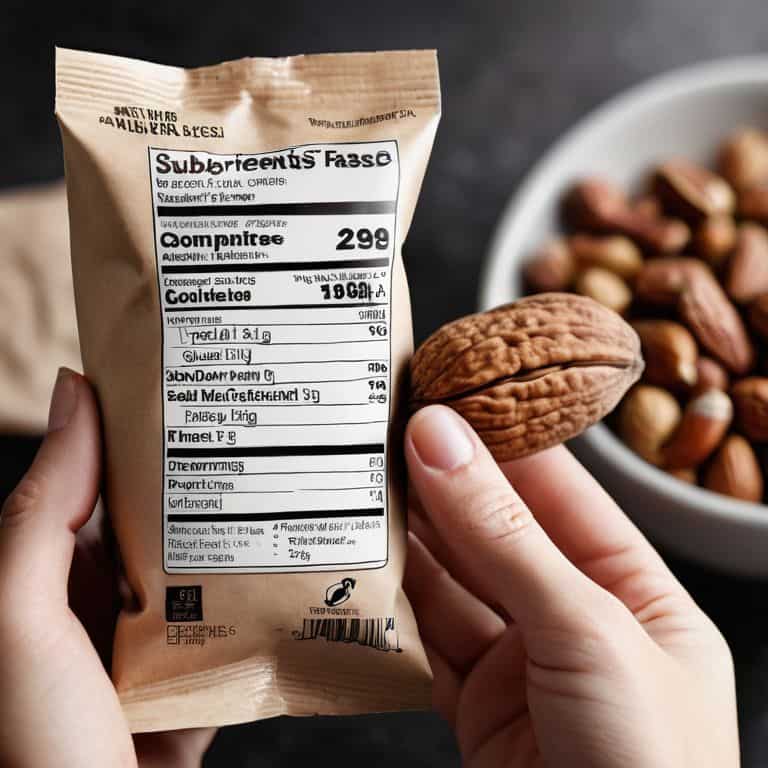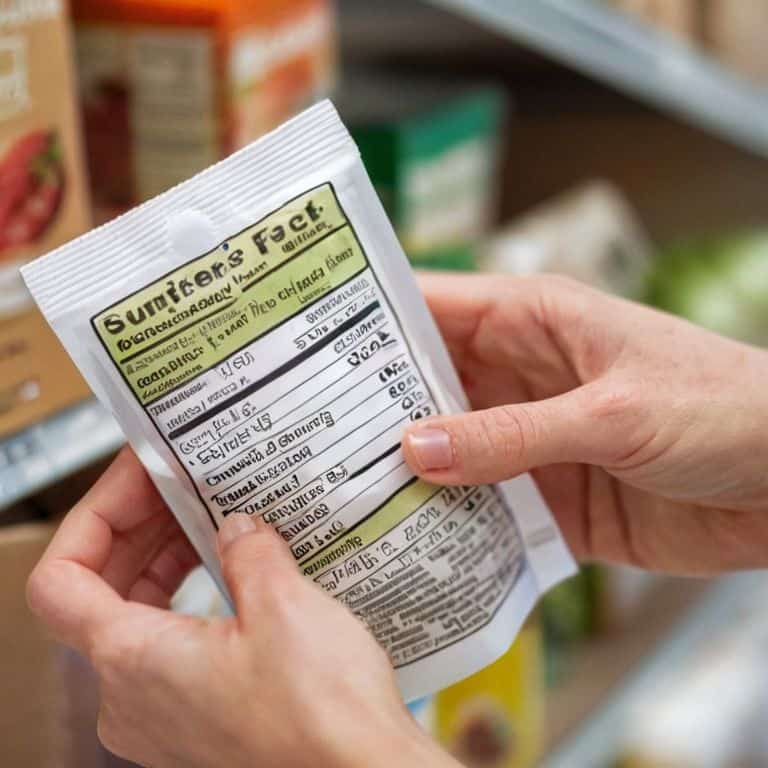I still remember the first time I stood in the grocery aisle, staring down a label and wondering what on earth some of those ingredients were. It was a wake-up call for me, and it’s a moment that many of you can probably relate to. The truth is, navigating a guide to deciphering the ingredients list doesn’t have to be overwhelming. In fact, with a little practice and patience, you can become a pro at understanding what’s really in your food. I’ve seen it time and time again with my clients – once they learn to decode the ingredients list, they feel empowered to make informed choices about their diet.
As a nutritionist, I’m excited to share my expertise with you and provide a straightforward approach to deciphering ingredients lists. In this article, I’ll cut through the confusion and give you the honest, no-hype advice you need to make sense of it all. You’ll learn how to identify the good, the bad, and the downright confusing, and how to use that knowledge to make healthier choices that actually nourish your body. By the end of this guide, you’ll be equipped with the skills and confidence to take control of your diet and start making choices that align with your values and goals.
Table of Contents
Guide Overview: What You'll Need

Total Time: 1 hour 15 minutes
Estimated Cost: $0 – $10
Difficulty Level: Easy
Tools Required
- Pen (for note-taking)
- Paper (for writing down ingredients)
Supplies & Materials
- Food Labels (for reference)
- Dictionary or Online Resource (for defining unfamiliar terms)
Step-by-Step Instructions
- 1. First, let’s start with the basics: when you’re standing in the grocery aisle, staring down a label, take a deep breath and remember that deciphering the ingredients list is a skill that can be learned. Begin by turning the packaging around and taking a glance at the ingredients list – don’t worry too much about what you see at first, just get a sense of the length and complexity of the list.
- 2. Next, begin to scan the list from top to bottom, looking for any ingredients that you recognize, such as fruits, vegetables, whole grains, or lean proteins. These are often listed first because they make up the majority of the product, so if you see a lot of familiar foods near the top, that’s a good sign.
- 3. Now, let’s get familiar with the terminology: as you scan the list, you’ll likely come across some words that sound like they belong in a chemistry lab. Don’t worry, these are just the scientific names for common ingredients – for example, “sodium chloride” is just a fancy way of saying “salt”. Take a moment to look up any words that you’re not sure about, and see if you can find a simpler explanation.
- 4. The next step is to identify any red flags: these might include added sugars, artificial preservatives, or excessive sodium. Don’t panic if you see one or two of these on the list – the key is to look for balance and moderation. If the list is dominated by sugary or salty ingredients, that might be a sign to put the product back on the shelf.
- 5. As you continue to scan the list, start to look for patterns: are there a lot of similar ingredients, such as different types of sugar or oil? Are there any ingredients that seem out of place, such as a vegetable product that contains a lot of meat by-products? These patterns can give you clues about the overall quality and nutritional value of the product.
- 6. Now it’s time to check the ratios: take a closer look at the proportions of different ingredients in the product. If the first ingredient is a whole food, such as chicken or brown rice, but the next five ingredients are all sugary or salty, that’s a sign that the product might not be as healthy as it seems. Look for products where the whole foods are listed in a reasonable proportion to the other ingredients.
- 7. Finally, trust your instincts: if a product has a ridiculously long ingredients list, or if it contains a lot of ingredients that you’ve never heard of, it might be best to err on the side of caution and choose a simpler alternative. Remember, the goal is to nourish your body, not to solve a puzzle – so don’t be afraid to keep it simple and choose products with ingredients lists that make you feel good.
Cracking the Code a Guide to Deciphering

As I delve into the world of understanding food labels, I’m reminded that it’s not just about deciphering the ingredients, but also about being aware of common allergens that can be hidden in plain sight. From nuts to soy, these allergens can be sneaky, and it’s essential to know how to identify them. By taking the time to read and comprehend the labels, we can make informed decisions about the food we put in our bodies.
When it comes to reading between the labels, it’s crucial to be aware of artificial additives that can be disguised with complicated names. This is where a little knowledge goes a long way. By familiarizing ourselves with these additives, we can make choices that align with our values and dietary needs. Whether it’s opting for organic or non-GMO products, the power is in our hands.
In my experience, nutrition label breakdown is an essential skill for anyone looking to take control of their diet. By understanding the different components of a label, we can make informed decisions about the food we eat. This includes being able to identify natural ingredients and distinguish them from their artificial counterparts. With a little practice, decoding labels becomes second nature, and we can focus on nourishing our bodies with whole, healthy foods.
Identifying Artificial Additives With Ease
When scanning the ingredients list, I like to think of artificial additives as a red flag, not a deal-breaker. They can be sneaky, hiding behind names that sound like they belong in a chemistry lab. But with a little practice, you’ll become a pro at spotting them. Look for words like “hydrogenated,” “fractionated,” or anything with a number in it – these are often indicators of artificial preservatives or flavor enhancers.
I encourage you to take a nuanced approach, though. Instead of cutting out foods with artificial additives entirely, try to balance them with whole, nutrient-dense foods. Remember, it’s all about progress, not perfection. By being mindful of these additives, you’ll start to make more informed choices, and that’s something to feel good about!
Understanding Food Labels With Joy
Understanding Food Labels with Joy
As I explore the world of food labels, I’m reminded of my trail runs – every step reveals a new landscape. Labels can be overwhelming, but what if we viewed them as a map to a healthier, happier us? I love discovering hidden gems, like a farmer’s market find, and learning about the people behind the products. By focusing on the positive, we can turn label-reading into a joyful experience.
I encourage you to join me in this journey, where every label tells a story of nourishment and delight. Let’s celebrate the good stuff and make informed choices that bring us closer to our wellness goals. With a little practice, decoding labels can become second nature, allowing us to indulge in our favorite treats, guilt-free.
5 Essential Tips to Demystify the Ingredients List
- Focus on the first five ingredients, as they make up the bulk of the product and give you a sense of what you’re really getting
- Learn to recognize and love the names of whole foods, like fruits, vegetables, and whole grains, which are often listed by their common names
- Don’t be afraid of unfamiliar words – many natural ingredients have long, scientific-sounding names, but are actually derived from plants or minerals
- Watch out for ingredient lists that are ridiculously long or include a multitude of unrecognizable terms, as this can be a sign of excessive processing
- Remember, the absence of certain ingredients can be just as important as their presence – look for certifications like ‘non-GMO’ or ‘organic’ to ensure you’re getting what you want
Key Takeaways to Unlock a Healthier You
Embracing the ingredients list as a tool, rather than a source of stress, allows you to make informed choices that nourish both your body and your taste buds
By focusing on adding whole, nutrient-dense foods to your diet, you’ll naturally start to crowd out artificial additives and preservatives, setting yourself up for long-term health and vitality
Remember, the goal is not to follow a set of rigid rules, but to cultivate a joyful relationship with food, where every bite is a celebration of flavor, nutrition, and self-love
Decoding with Joy
The ingredients list is not a source of stress, but a map to a more mindful, nourishing relationship with food – and the key to unlocking a world of flavors that will make your taste buds sing!
Laura Paskal
Embracing the Joy of Informed Eating

As we conclude this guide to deciphering the ingredients list, remember that understanding food labels is a journey, not a destination. We’ve covered the essential steps to crack the code of ingredients lists, from recognizing artificial additives to making informed choices. By applying these principles, you’ll become more confident in your ability to navigate the grocery aisle and make decisions that align with your values and nutritional goals. Recall the importance of identifying artificial additives with ease and how it can impact your overall well-being.
As you move forward, I encourage you to view the ingredients list as an opportunity to nourish your body and soul. Don’t be afraid to get creative in the kitchen, experiment with new recipes, and find joy in the process of preparing healthy, delicious meals. By embracing this mindset, you’ll not only develop a healthier relationship with food but also cultivate a deeper appreciation for the simple pleasures in life. So, go ahead, take control of your nutrition, and savor the journey – your body and taste buds will thank you!
Frequently Asked Questions
What are some common tricks food manufacturers use to hide unhealthy ingredients on the label?
Let’s get real – food manufacturers often use clever naming tricks to disguise unhealthy ingredients. They might list sugar as ‘evaporated cane juice’ or ‘high-fructose corn syrup’ as ‘corn sugar’. Some also split ingredients into smaller portions to avoid listing them as the first ingredient, making it seem like a healthier option. Stay vigilant and read between the lines!
How can I quickly identify if a product contains a lot of added sugars or artificial sweeteners?
When scanning labels, I look for words like ‘high fructose corn syrup,’ ‘sucrose,’ or ‘maltodextrin’ for added sugars, and ‘aspartame’ or ‘sucralose’ for artificial sweeteners. You can also check the ingredient list for numbers or unfamiliar terms, which often indicate added sugars or artificial ingredients.
Are there any apps or online tools that can help me decipher ingredients lists and make healthier choices?
Absolutely, there are some amazing apps and online tools that can help you crack the code! I’m a big fan of apps like EWG’s Healthy Cleaning and Food Scores, as well as websites like Nutrition Facts and Label Insight – they make it easy to decode those pesky ingredient lists and make informed choices that nourish your body.
